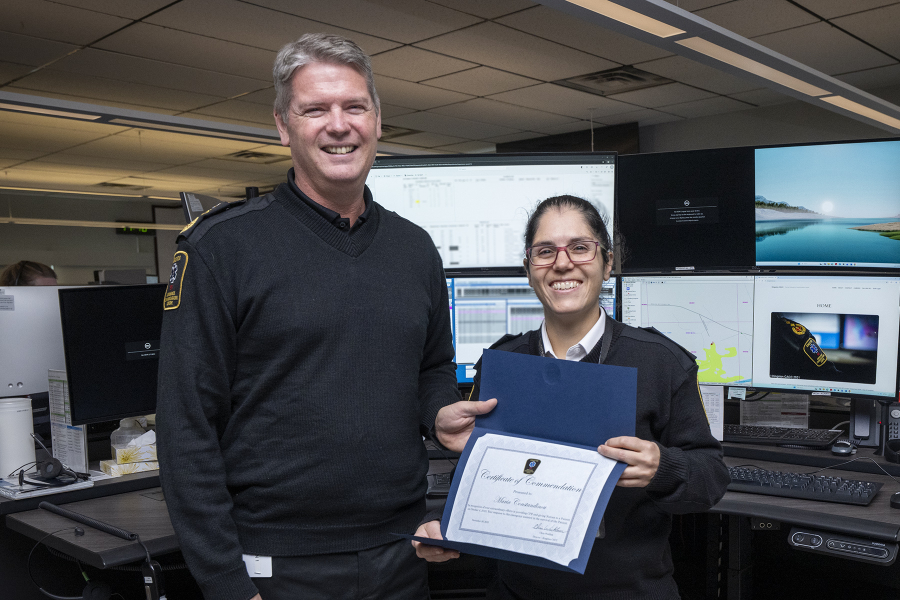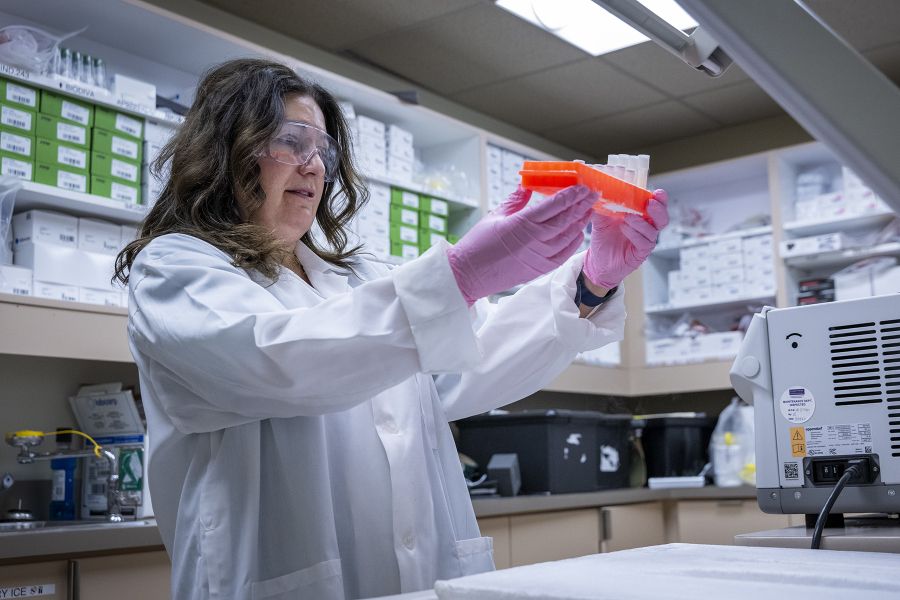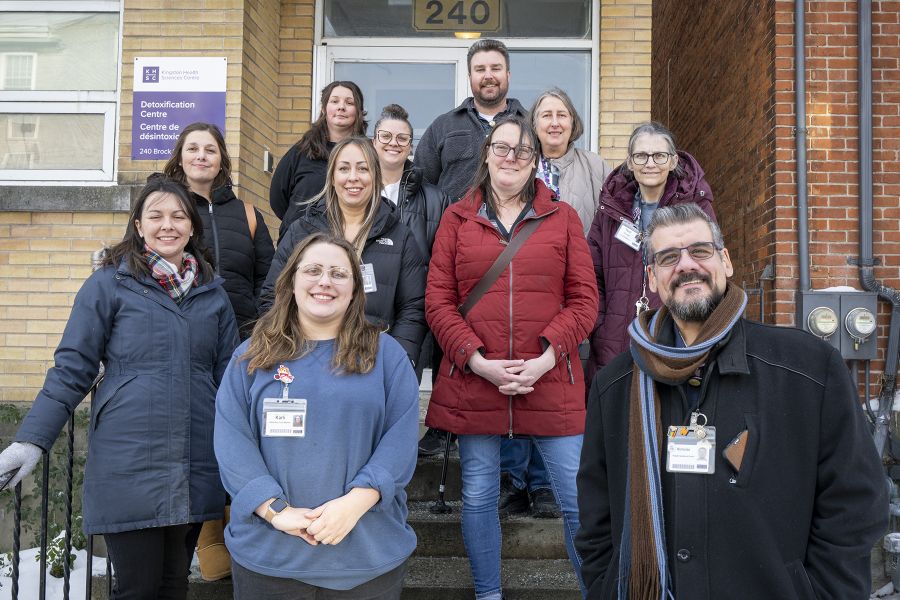Effective immediately masking is required for everyone when present on all inpatient units, in the Emergency Department (ED), the Urgent Care Centre (UCC), and the Children’s Outpatient Centre (COPC).
Kingston Health Sciences Centre (KHSC) is now home to one of the most advanced treatments for liver cancer in Canada. Known as Y-90 therapy, this minimally invasive procedure precisely delivers a knockout blow to tumors from within, using a radioactive isotope, Yttrium-90.
Y-90 therapy uses advanced medical imaging to guide a catheter through the patient's arteries, allowing for the precise placement of microscopic radioactive glass beads directly inside the tumor. The beads emit radiation, killing cancer cells from the inside, while preserving surrounding healthy tissue.
“Y-90 matters because it has the ability to cure, convert and control cancers,” says Dr. Emidio Tarulli, KHSC Interventional Radiologist and Assistant Professor of Diagnostic Radiology at Queen’s University. “Firstly, it can be used to cure certain types of liver cancer. It can also ‘convert it’ by shrinking tumors down to a size where surgery becomes a curative option. If a cure is not an option, it can control the cancer, giving patients back precious time.”
The Y-90 program fills an important gap in liver cancer treatments, offering patients in southeastern Ontario access to this personalized care. KHSC is now one of the earliest adopters of Y-90 therapy in Canada. Compared to surgery or conventional external radiation therapy, Y-90 results in fewer side effects and a faster recovery. The procedure is performed over two outpatient appointments, meaning patients can return home on the same day.
“We were frequently identifying patients who could benefit from this therapy but were unable to travel out of the region due to their condition,” says Dr. Tarulli. “This is the Interventional Radiology and Nuclear Medicine teams at KHSC stepping up to deliver an international standard of liver cancer care in Kingston.”
The Y-90 team at KHSC consists of over 40 staff members across multiple departments. The entire process involves weeks of planning for a procedure with a delivery window of just a few hours.
“The logistical challenge is a big part of the accomplishment here,” says Dr. Tarulli. “The multiple timed appointments to deliver the customized dose to each patient at the right time requires a massive, coordinated effort between our IVR, Computed Tomography (CT), and Nuclear Medicine departments. We’ve been able to treat more patients than anticipated since starting the program because our teams are so well integrated.”
Since its launch in September 2024, the Y-90 program has treated approximately 10 patients.
"Things are going well at this point,” says Dr. Tarulli. “We're starting to see results for patients, and they look good.”
About Y-90:
- The radioactive glass “microspheres” used in Y-90 are each around 15-25 micrometres in diameter – smaller than the width of a human hair.
- Between 1.2 and 8 million “microspheres” are used in a treatment, when collected together measures less than volume of a teaspoon.
- Patients have follow-up appointments at six weeks and three months, at which point physicians are able to evaluate the effectiveness of the treatment.



